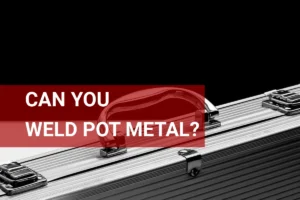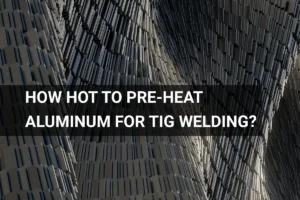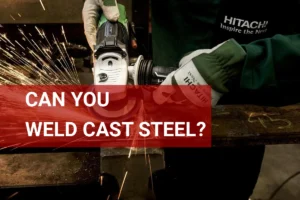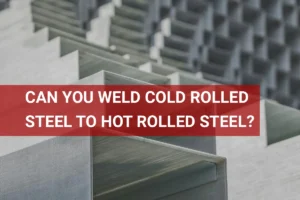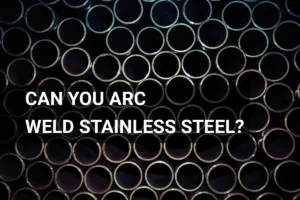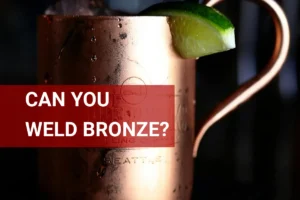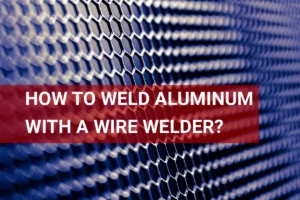Can You Weld Iron? Exploring Methods, Types, and Safety Tips
Published on: May 10, 2025 | Last modified: March 4, 2025
By: Joe Carter
Iron is a strong, durable metal that’s essential in construction and manufacturing. It’s found naturally and is one of the most commonly used materials worldwide.
A popular question I get is, can you weld iron? It’s crucial to know because welding iron impacts the strength and integrity of your projects. In my personal experience, using the right techniques makes a big difference in the final outcome.
In this guide, we’ll explore various aspects of iron welding, including types of iron and their weldability, key prerequisites, essential steps, safety tips, and different welding methods. We’ll also cover factors that affect iron welding, common issues you might face, aftercare, inspection tips, advantages of welding iron, plus when to consider alternatives. So, let’s dive into whether you can weld wrought iron or how to tackle welding for unistrut!
Contents
- Can You Weld Iron?
- What is Iron?
- Types Of Iron and Their Weldability
- Prerequisites to Keep in Mind
- Safety Tips
- Steps to Weld Iron
- Types Of Welding Methods for Iron
- Factors Affecting Iron Welding
- Common Issues You Might Encounter
- Common Misconceptions About Welding Iron
- Welding Iron vs. Other Materials
- Aftercare, Inspection, and Advanced Tips for Welding Iron
- Advantages Of Welding Iron
- Use Cases Of Iron Welding
- When to Try a Different Approach
- Frequently Asked Questions (FAQs)
- Conclusion
- References
Can You Weld Iron?
Yes, you can weld iron. It’s relatively easy if you use the right technique and equipment. MIG welding works best, offering a clean and strong weld. Just ensure the surface is clean before you start!
What is Iron?
Iron is a metallic element with the symbol Fe and atomic number 26. It’s the most abundant element on Earth by mass, making up about 34.6% of the planet’s core. Iron has a density of 7.87 g/cm³ (0.284 Lb/in³) and is known for its strength and durability. In its pure form, iron is malleable and ductile, but as an alloy, it gains significantly improved properties, making it useful across various industries.
When it comes to welding, you might ask, “Can you weld iron?” I’ve had personal experience where welding iron was crucial for a project. It’s important to note that different types of iron behave differently when welded, leading to various techniques and considerations.
A colleague of mine found welding wrought iron particularly useful when restoring old gates. They discovered that with the right MIG (Metal Inert Gas) equipment, it’s manageable to join wrought iron pieces together. Questions like, “Can you MIG weld wrought iron?” are common, and the answer often depends on the right settings and rods to use for strong, reliable work.
Types Of Iron and Their Weldability
What types of iron will you commonly encounter in welding?
-
Cast Iron
Cast iron is a hard material often used in machinery and cookware. It’s tricky to weld but can be done with specific techniques. Preheat the metal to about 400°F (204°C) to reduce crack risk, then use a cast iron welding rod. For those exploring various welding techniques, understanding the process of seam welding methods can be beneficial.
-
Malleable Iron
Malleable iron is treated to enhance ductility (Bendability). You can easily weld this type using standard techniques. Preheat to around 300°F (150°C) and use mild steel filler rods for best results. For those tackling pipe projects, mastering pipe welding with 6010 can be beneficial.
-
Wrought Iron
Wrought iron is known for its toughness and malleability. It welds well. Use MIG welding with a solid wire, and keep surfaces clean for a strong bond.
-
Gray Iron
Gray iron is a common form of cast iron with good machinability. Welding it is complicated due to cracking. Preheat to 500°F (260°C) and use special gray iron welding rods for better adhesion.
-
Ductile Iron
Ductile iron is similar to cast iron but stronger and more flexible. You can effectively weld it using standard techniques. Heat to around 400°F (204°C) and use a low-hydrogen filler rod to prevent cracking. When working with different materials, it’s important to consider if you can weld zinc plated steel safely using appropriate processes.
We’ve wrapped up various types of iron and their weldability here. Let us turn our attention to important prerequisites to consider.
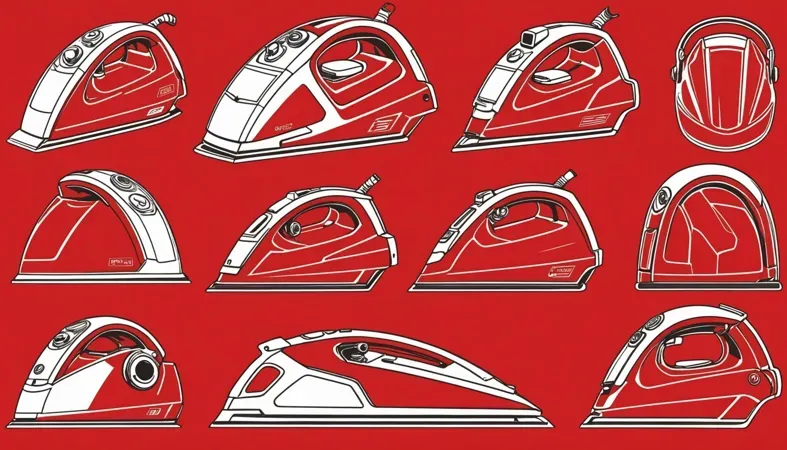
Prerequisites to Keep in Mind
What do you need to weld iron?
- MIG Welder: You’ll need a MIG welder, like the Miller Multimatic 215, which provides the right heat and feed for welding iron easily.
- Welding Rods: You’ll need ER70S-6 welding rods, such as Lincoln Electric’s ER70S-6, ideal for strong joints in iron.
- Oxygen and Acetylene Tanks: You may need oxygen and acetylene tanks, like the Smith MC Series, to cut thick iron pieces when necessary.
- Anti-Spatter Spray: Have anti-spatter spray, such as Weld-Aid 100S, to prevent weld spatter in your work area during the job.
You should now have a good understanding of essential prerequisites. In the next part, we’ll discuss important safety precautions.
Safety Tips
Let’s cover essential precautions for welding iron.
- Wear Proper Gear: Always use welding helmets, gloves, and fire-retardant clothing. I recommend Miller Carbon Fiber Welding Gloves for comfort.
- Ventilation: Ensure adequate airflow to avoid harmful fumes. Aim for a minimum of 10 ACH (Air Changes Per Hour) in your workspace.
- Slag Removal: Keep your workspace clear of slag and debris. Use a heavy-duty magnetic broom to collect leftovers.
- Check Equipment: Inspect all welding tools for damage or wear. I use Hobart tools for their reliability.
Prioritizing safety precautions is crucial to ensure your welding job goes smoothly.
We’ve wrapped up essential safety tips here. Let us turn our attention to the steps for welding iron.
Steps to Weld Iron
Here are the steps to weld iron effectively.
-
Prepare the Iron Surface
Start by cleaning the area you plan to weld. Remove rust, dust, or paint with a wire brush or grinder. A clean surface ensures better adhesion and minimizes defects. For wrought iron, smooth spots help the weld penetrate better. Understanding how to effectively join materials at 45-degree angles can enhance the strength and aesthetics of the project.
Use a grinder to remove impurities or oxidation. A metal prep tool or flap disc can speed this up. Depending on the size, round off edges to prevent cracks. Aim for at least 80% clean metal in your workspace.
-
Tack the Pieces Together
Next, secure the iron pieces in position. Use clamps, magnets, or vice grips to hold them steady. Tack weld at the corners or points where they meet. Start with low amp settings—around 50-80 Amps is good for thin metals.
Adjust your welder’s settings before you begin. Experiment with tacks to see how each setting affects the weld. Clean the area between tacks to maintain the integrity of your work.
-
Choose the Right Welding Technique
Decide on your method: MIG (Metal Inert Gas), TIG (Tungsten Inert Gas), or stick welding. MIG welding is popular for iron due to its simplicity and speed. Use ER70S-6 wire for MIG, which feeds smoothly through the welder. For thicker iron, increase the wire diameter to 1.0 mm as needed.
Different iron alloys may require different techniques. For MIG, set the voltage between 18 to 22 volts for optimal penetration. Pay attention to travel speed to avoid excessive puddling.
-
Weld the Iron Across Joints
Focus on welding along the joints. Make smooth, consistent passes, keeping about ¼ inch (6 Mm) from the parent material. Use multiple passes for deep joints if needed. The key is to maintain a steady hand and consistent speed.
Slow down if you see porosity or uneven beads. Inspect each pass as you go. Iron can warp if overheated, so consider cooling methods to prevent distortion.
-
Clean and Inspect the Weld
After welding, clean any slag or spatter with a wire brush or chipper. Inspect beads after they cool for uniformity and strength. Look for cracks, gaps, or rough spots. Fix them immediately for a strong joint.
Final cleanup removes contaminants, making future work easier. Use a grinder if larger areas need smoothing. Your finished product should look seamless and solid!
We have now covered the steps for welding iron. Next, we will explore different welding methods for iron.
Types Of Welding Methods for Iron
Let’s explore different welding methods: MIG Welding, TIG Welding, Stick Welding, Flux-Cored Arc Welding, and Submerged Arc Welding.
-
MIG Welding
MIG welding uses a continuously fed wire. It’s fast and easy, making it great for beginners. You can weld wrought iron in thicknesses of 1/16 to over 1 inch (1.6 To 25.4 Mm).
-
TIG Welding
TIG welding offers more control. You use a tungsten electrode and filler rod, which is ideal for thinner iron sections and intricate designs.
-
Stick Welding
Stick welding, or shielded metal arc welding (SMAW), uses a consumable electrode. It’s perfect for outdoor work since wind has little effect. You can effectively weld all types of iron, including cast iron.
-
Flux-cored Arc Welding
This method is similar to MIG welding but uses tubular wire filled with flux. It’s ideal for thick iron and works well outdoors. You can achieve strong joints with minimal cleanup.
-
Submerged Arc Welding
Submerged arc welding (SAW) is automated and high-speed. It’s used for thick materials, allowing for deep penetration, which is perfect for large structures.
Factors Affecting Iron Welding
What factors influence your ability to weld iron effectively?
-
Iron Composition
The type of iron affects weldability. Wrought iron, with low carbon content (0.03% To 0.1%), welds easily, while cast iron, with higher carbon levels (1.7% To 4%), can crack.
-
Welding Technique
Different techniques like MIG and TIG yield varying results. MIG welding is great for wrought iron; it uses a faster feed rate and is more forgiving with heat input.
-
Heat Input
Watch the heat closely. Too much heat can warp iron, while too little can lead to incomplete fusion. Aim for 5 to 15 kJ/cm (1.5 To 3.8 Kj/in) for mild steel to avoid issues.
-
Equipment Settings
Setting your machine correctly is crucial. Use the proper amperage based on iron thickness; generally, 130-150 amps works well for 1/8 inch (3.2 Mm) mild steel. A mismatch can create weak spots.
-
Joint Design
Good joint design enhances weld strength. An overlap joint can reduce weld area, while a beveled joint promotes full penetration, leading to stronger, more reliable welds.
Common Issues You Might Encounter
Let’s look at common technical problems when welding iron.
-
Cracking in Welds
Iron can crack due to poor temperature control. Check for visible cracks or changes in sound in the weld. Resolve this by preheating the iron to 130°C (266°F) and controlling the cooling rate.
-
Porosity Formation
Iron often develops porosity from moisture or contaminants. Look for small holes in the weld. Ensure your workspace is dry and clean with a solvent before welding.
-
Inadequate Penetration
Some iron welds don’t penetrate deeply enough. Spot this by looking for a flat, rope-like bead. Adjust your welder settings to achieve a deeper arc.
-
Distortion Of Parts
Iron pieces might warp during welding. You’ll notice distortions if the pieces don’t fit properly afterward. Reduce this by tack welding at multiple points before the final pass.
-
Wetness in Weld Area
Iron shouldn’t be wet during welding. Look for steam or moisture during the process. Address this by drying the area completely or letting it warm up before proceeding.
Common Misconceptions About Welding Iron
Let’s clear up some misunderstandings that often come up in welding iron.
-
Welding Iron is Always Difficult
Many think welding iron is hard. However, it largely depends on the type of iron. While cast iron can be tricky, wrought iron is pretty straightforward to weld.
-
All Welding Processes Are the Same
That’s not true! For instance, MIG welding works well for thin metals while stick welding is great for outdoors. Each method has its unique applications based on the iron type.
-
You Can’t Fix Cast Iron
While cast iron poses challenges, it’s not impossible to weld. Using preheating and the right rods, you can successfully repair cast iron pieces.
-
Welding Will Always Ruin the Metal
A common myth is that welding weakens the iron. In reality, skilled welders can strengthen the overall structure if proper techniques are used.
-
Welds Don’t Need Inspection
That couldn’t be more wrong! Regular inspection is vital. Failing to check welds can lead to failures down the road.
Welding Iron vs. Other Materials
Ever wondered how welding iron compares to other metals? Here’s a quick look.
| Metal Type | Weldability | Optimal Method | Notes |
|---|---|---|---|
| Wrought Iron | Easily Weldable | MIG | Good ductility, less risk of cracking. |
| Cast Iron | Hard to Weld | Stick with preheating | High carbon content creates brittleness. |
| Aluminum | Moderately Weldable | TIG | Be mindful of oxidation before welding. |
| Stainless Steel | Weldable | TIG or MIG | Requires specific filler rods for quality. |
Aftercare, Inspection, and Advanced Tips for Welding Iron
Here are essential aftercare, inspection tips, and expert advice to ensure successful iron welding.
Aftercare Tips
After welding, cool your workpiece rapidly with air to prevent distortion. Apply a rust-inhibiting primer immediately to avoid corrosion, using a clean brush for consistency. Touch up joints with a 3M® Clean-N-Strip product for smooth finishes, improving longevity by up to 40% compared to untreated surfaces.
Inspection Procedures
Inspect weld seams for undercut greater than 1 mm (0.04 Inches) using a digital caliper for precise measurements. Use a magnet to test for porosity in the weld, alerting you to potential issues. For best results, I prefer using a Stellite® honing tool, which provides a refined examination to ensure quality.
Expert Tips
If you’ve got several years of welding experience, optimize your MIG welder settings: Aim for 22-28 volts (V) output and a wire feed speed of 6-12 inches per minute (In/min). Weld at a maximum travel speed of 5 inches per minute (In/min) to adjust penetration depth accurately. Double-check shielding gas flow rates with a precise flow meter, targeting 15-20 cubic feet per hour (Cfh) for stable welds.
Advantages Of Welding Iron
The main benefit of welding iron is its strength. A colleague found it useful for creating durable structures that withstand heavy loads.
Additionally, welding iron offers versatility in applications, cost-effectiveness, ease of repair, and multiple welding techniques. You can choose from MIG, TIG, or stick welding, depending on your project needs. Understanding and adhering to safety standards is crucial, especially when considering the minimum shade for arc welding.
Use Cases Of Iron Welding
I’ve used iron welding in various projects. It has many applications, such as:
- Structural Reinforcement: In construction, welding iron beams creates strong frameworks. It’s popular for its excellent load-bearing capacity.
- Heavy Equipment Repairs: Many industries weld iron parts on machinery to fix cracks or breaks. It’s common since iron is durable and readily available.
- Fencing and Gates: Farmers and homeowners often weld iron for fencing. It’s preferred for its ability to withstand weather conditions.
- Pipe Fabrication: Plumbing and HVAC professionals weld iron pipes for a leak-proof seal. It’s widely used for its robust nature that can handle pressure.
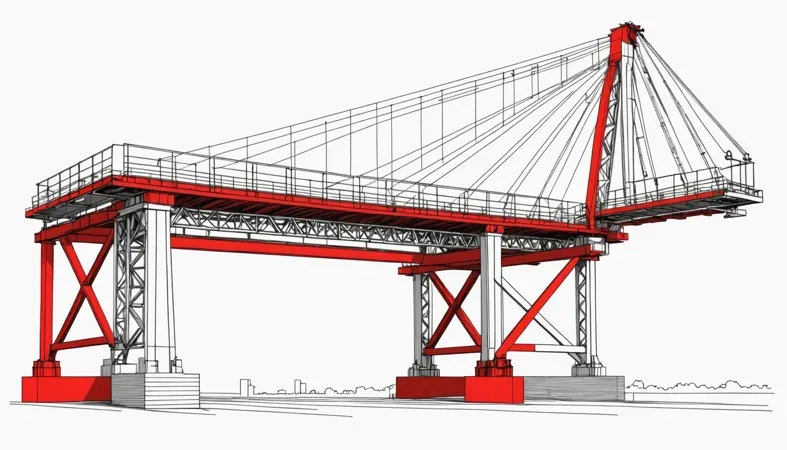
When to Try a Different Approach
Sometimes, you may want to explore other options. For instance, using products like JB Weld or Loctite Metal and Concrete Epoxy can achieve strong bonds without traditional welding. These adhesive solutions may be better for thin metals or delicate projects.
This reminds me of a valuable lesson I learned when I worked with wrought iron fences. Instead of welding, I found that using a mechanical fastening system, such as self-tapping screws, provided a fast and reliable installation. Remember, each project has its requirements. Choose your method wisely!
Frequently Asked Questions (FAQs)
Now let us look at some questions I typically get asked.
Is It Hard to Weld Iron?
It’s not hard to weld iron, but it does require skill and proper equipment. Iron can be tricky due to its high carbon content in some forms, making it prone to cracking. With the right tools and technique, you can produce solid, reliable welds. Understanding where to source quality materials is crucial for successful projects, and you can discover where to buy metal for welding.
Which Welding is Used for Iron?
MIG welding is often used for iron due to its speed and ease of use. It helps create clean, strong welds quickly, making it ideal for both beginner and professional welders alike.
Can Wrought Iron Be Welded?
Yes, wrought iron can be welded effectively. Wrought iron’s low carbon content allows for good fusion during welding, maintaining strength. Typical techniques include MIG, TIG, and stick welding.
Can You Weld Unistrut?
Yes, you can weld unistrut. It’s commonly made from steel, and welding it helps achieve strong connections. Just ensure the welding method matches the thickness of the unistrut section.
Which Iron Cannot Be Welded?
Cast iron is the type that cannot be welded easily. Its high carbon content makes it very brittle, leading to cracking during and after the welding process. Alternative methods, like brazing, are often used instead.
Can Iron Be Welded?
Yes, iron can be welded. Different methods apply depending on the type, but techniques like MIG and stick welding work well. Each method provides a strong bond when done correctly.
Conclusion
We’ve made it to the end, and I hope it was helpful. We covered various aspects of welding iron such as the types of iron and their weldability, safety tips, welding methods, and common issues you might face. Additionally, we looked at prerequisites, steps for welding, aftercare, and the advantages of welding iron.
I trust these insights have been helpful. So, can you weld iron? Yes, you can. Depending on the type of iron, whether it’s wrought or cast, methods like MIG or stick welding are effective. Understanding factors that affect weld quality, like heat input and material thickness, is crucial, too. That way, you’ve got the right know-how for successful iron welding.
For further exploration of related topics and to enhance your welding knowledge, feel free to visit our homepage at What is Welding, where you’ll find more expert blogs and valuable advice on this subject.
References
- American Welding Society. (2020). AWS C5.6: Recommended Practices for Gas Metal Arc Welding. Miami, FL: AWS.
- Little, R. L. (1999). Welding and Welding Technology. New York, NY: McGraw-Hill Education.
- Appleton, W. (2020). Welding and Cutting: A Practical Handbook. Hauppauge, NY: Nova Science Publishers.
Joe Carter is a retired welding professional with over 40 years of hands-on experience in the industry, spanning ship repair, structural welding, and even underwater projects. Joe is a master of MIG, TIG, and Stick welding. Passionate about mentoring the next generation of welders, Joe now shares his decades of expertise and practical insights to help others build rewarding careers in welding.
American Welding Society, Iron, Pipe Welding, Safety Tips, Types Of Iron, Welding, Welding Methods, Welding Techniques
